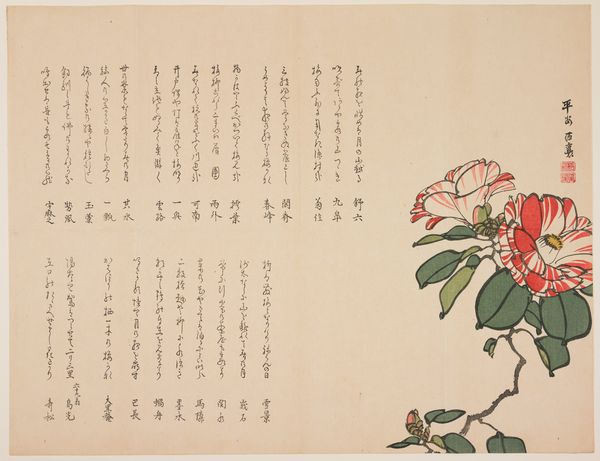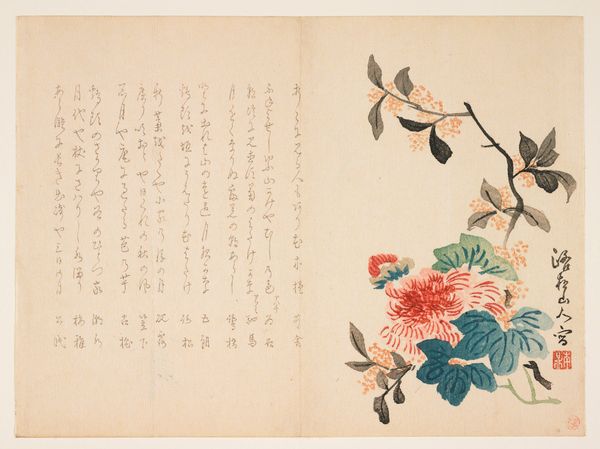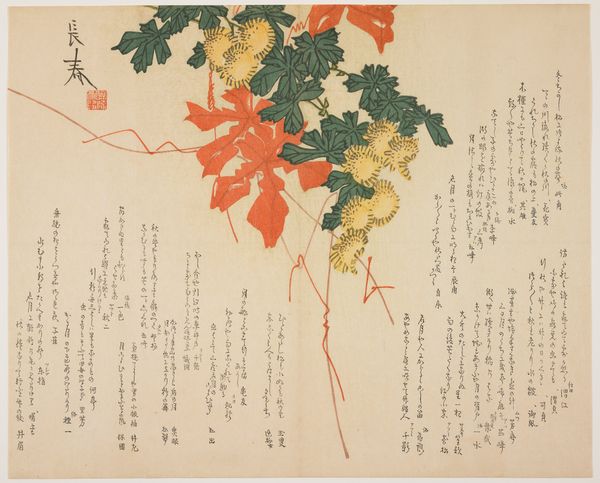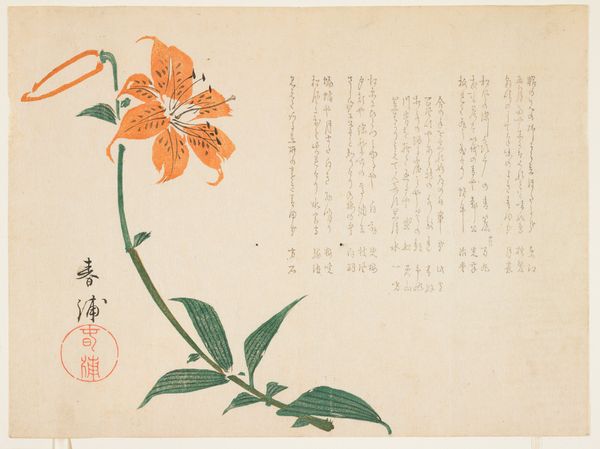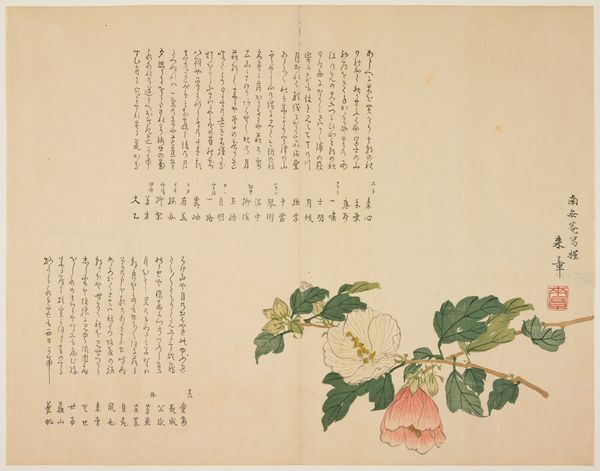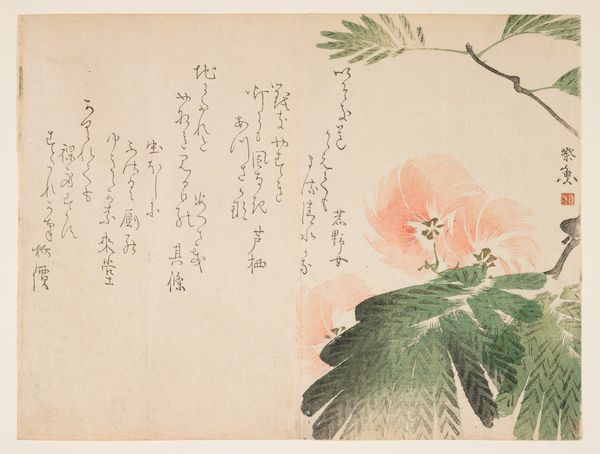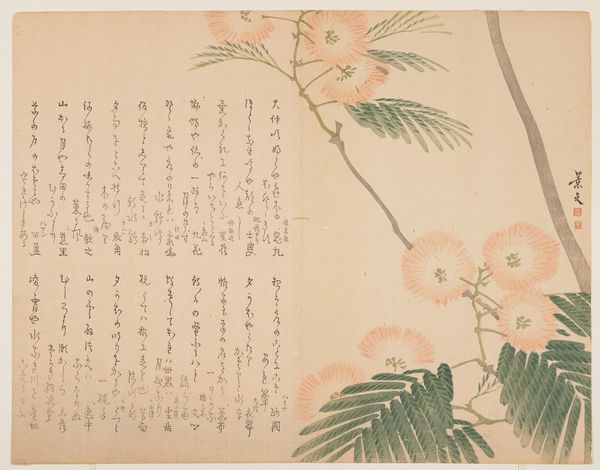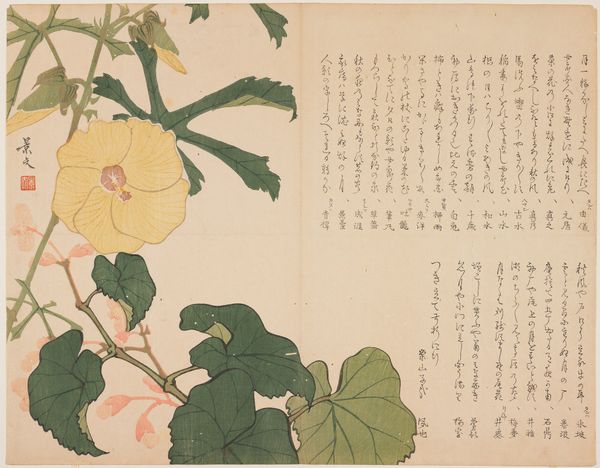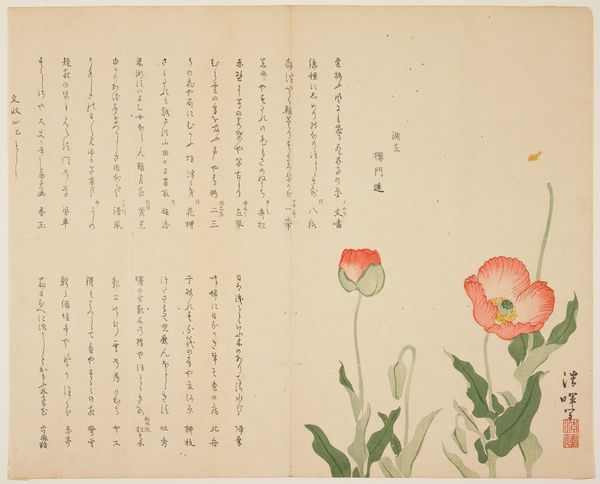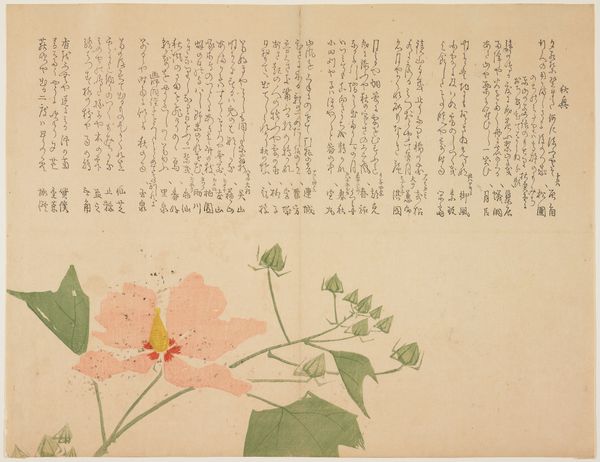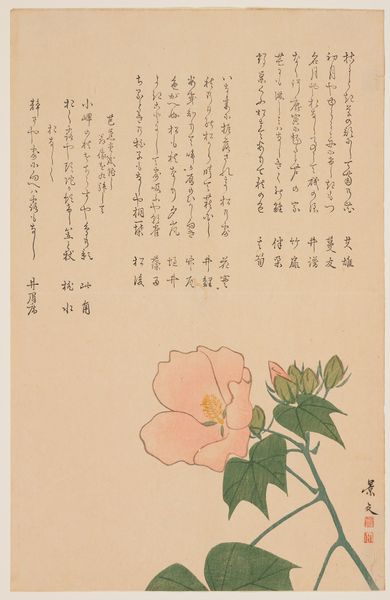
print, ink, woodblock-print
# print
#
asian-art
#
ukiyo-e
#
ink
#
woodblock-print
Dimensions: 15 x 19 1/4 in. (38.1 x 48.9 cm) (image, sheet)
Copyright: Public Domain
Editor: This is "Camellia Flowers," a woodblock print in ink and color from around 1820 by Nakamura Nagaharu. It has a very decorative quality. The bright colors of the flowers pop, but the many lines of text framing them also seem quite important to the overall design. What can you tell me about the symbolism at play here? Curator: Well, the camellia itself carries rich symbolic weight. In the East, particularly in Japan, it's associated with fleeting beauty and the ephemeral nature of life. But I'd argue that it represents more than just that. Editor: How so? Curator: Notice how tightly packed the blooms are. It almost creates a feeling of abundance, a concentrated burst of the season’s energy. These blooms also symbolize longevity and enduring love due to their ability to bloom in colder months, a resilience depicted beautifully here. Considering that, alongside the textual components, we get a sense of combined celebrations. Do you sense a season? Editor: Definitely. Spring! So it's not just about personal reflection but a community coming together, wouldn't you say? Curator: Precisely. And Ukiyo-e, as a genre, often blended those personal and public spheres. It allowed people to engage with both intimate feelings and broader social narratives through accessible imagery. The print creates its sense of timelessness by combining flowers with an unknown poem or story to connect one’s spirit and memories to one another. Editor: I’ve never considered how memory affects Ukiyo-e! Thinking about these flowers and text as a way to preserve and share fleeting moments adds another layer to its appeal. Thanks. Curator: My pleasure. Looking closely always rewards us with a deeper connection to the past, reminding us that symbols continue to resonate across time.
Comments
No comments
Be the first to comment and join the conversation on the ultimate creative platform.
